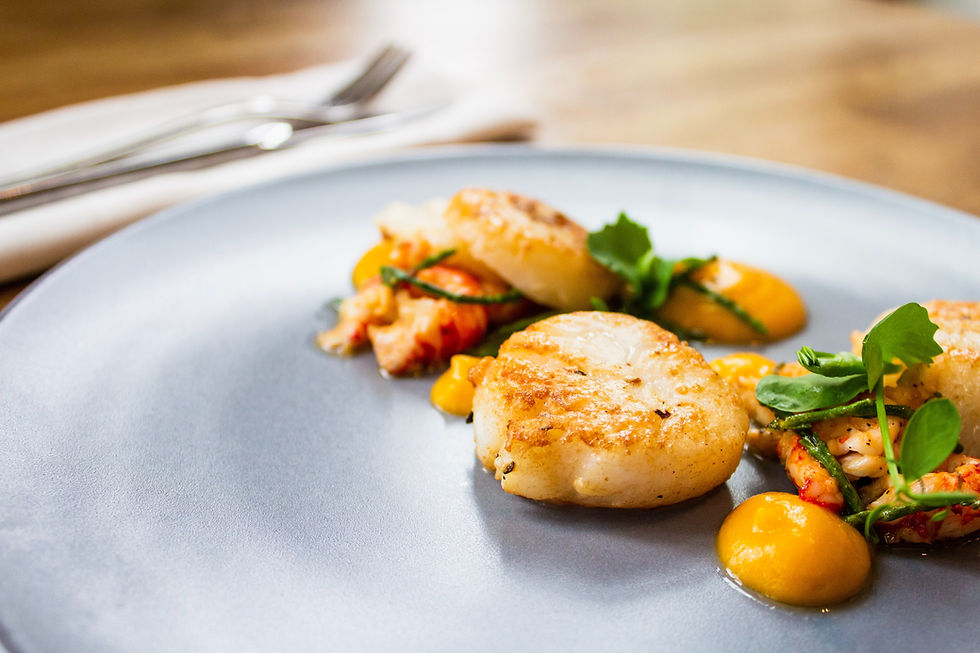Like just about everything that emerges from laboratories, molecular cooking has caused many to fantasise about its birth. The result of molecular and physical gastronomy, a real science that now has a chair in various faculties, molecular cuisine seemed to have disappeared from our plates. On the contrary, enthusiasts have never given up and are continuing their culinary experiments.

What is molecular gastronomy?
Molecular and physical gastronomy is the work of a French physical-chemical engineer, Hervé This, and an Oxford physicist, Nicholas Kurti. The term first appeared in 1988, at the instigation of the two men, and was first encountered by the public in 1992, at a symposium held in Sicily on the subject. Hervé used it as the title of his doctoral thesis and it remains the first official mention of the term 'molecular and physical gastronomy'.
This new science intends to broaden the panel of food sciences by approaching the culinary arts from a physical point of view. The natural derivative of this is molecular cuisine, a cuisine that allows the discovery of new fields of application for... cuisine. In short, we cook with new utensils, renovated or reused for other purposes; thermocirculators, rotary evaporators, siphons, liquid nitrogen... So many words that until now have rarely found their place in a kitchen.
What are the challenges of molecular cooking?
Molecular cooking can be approached from various angles;
Scientific studies of the artistic and social components of culinary activity;
And the scientific study of definitions and other culinary precisions.
Note that what we call 'culinary precisions' are sayings, adages, tricks, grandmother's tips, 'coups-de-mains' and everything that contributes to the success and/or improvement of a recipe. Hervé This has collected more than 25,000 of them! And he scientifically analyses each of these 'tips'.
For example, the aim of these studies is to be able to model the sequence of chemical reactions specific to cooking. What happens chemically and physically during an emulsion, flocculation, convection or deep-frying?
Molecular, scientific cooking is naturally becoming a major player in the food industry. It encompasses knowledge of food chemistry, biochemistry, physics and microbiology. It therefore works to improve knowledge of food processing in order to limit health problems, food safety and allergenic effects. By knowing perfectly the physical and chemical mechanisms of the foodstuffs at work in a precise recipe, it becomes possible to substitute more easily certain foodstuffs which could present problems (allergen for example) by others with the same physical and chemical properties under the same conditions. Agar-agar, an extract of red algae, can replace eggs in its coagulating properties, for example, thus excluding any risk of salmonellosis...
More scientific than gastronomic
Molecular cuisine is therefore much more scientific than gastronomic in the strict sense of the word. At least in its approach. However, there are many applications and Hervé This has demonstrated this on many occasions during various television programmes. Like the famous day on France 5 when he cooled a preparation with liquid nitrogen, without using an ice cream maker, which is considered essential for the perfect success of a sorbet, without large ice crystals.
In fact, many chefs still use the applications and results of Hervé This's studies and those of other molecular gastronomy chairs around the world. Thierry Marx is one of them. Marc Veyrat and Ferran Adria in Spain are others. But Hervé This's most loyal companion is without doubt Pierre Gagnaire. Since the end of the 1990s, these two have worked together for the pleasure of discovery and taste. Every month, Hervé This gives a new idea to his colleague. Pierre Gagnaire is then responsible for developing one or more recipes. These recipes are posted on his website and offered free of charge to all his readers.

Comments